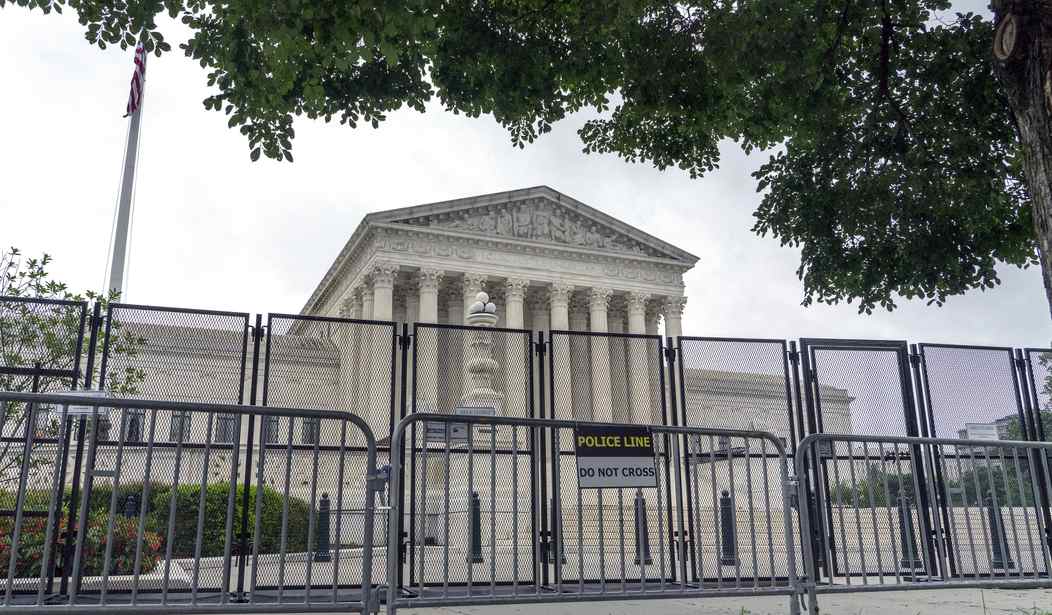Quietly, with surprisingly little notice in a presidential election year, some determined Democrat activists are struggling to force a liberal justice off the Supreme Court because she’s too old.
Such blatant ageism doesn't apply to 81-year-old Joe Biden, of course. But it is acceptable because of the looming possibility of a President Donald J. Trump again.
He’s batting 1.000 with his appointments of three conservative Supreme Court justices, who have created a decisive ruling majority that, among other things, finally overthrew the Roe v. Wade ruling of 1973.
That epic 2022 decision, in a 6-3 vote, after 49 years of division, controversy, and even violence, essentially returned the question of abortion legality to the individual states, long a conservative goal.
Trump announced recently that he opposes a blanket national ban on abortions that many in his adopted party advocate and favors the now-embedded states' rights position.
The new Trump court majority was possible because, despite pleas to relinquish her seat during a prolonged series of serious health problems, liberal Justice Ruth Bader Ginsburg hung on to her lifetime appointment until the end of that lifetime.
She died in 2020 at age 87 from pancreatic cancer complications less than two months before Joe Biden’s election. That left the appointment up to Trump (He named Amy Coney Barrett), and Democrats fear a repetition.
Even before there’s any new health crisis, the activists now want the reliable liberal, Obama appointee Justice Sonia Sotomayor, to hurry up and quit because – gasp – she turns 70 this year.
These days in the D.C. Swamp, 70 seems practically juvenile. Sotomayor is almost 12 years younger than the faltering Joe Biden, who says he wants to stay in office until he’s 86. Though to perform his duties, he needs written notes with the orders of his unidentified younger handlers.
None of Trump’s three appointees are even 60 yet, which appears to augur a prolonged period of conservative court rule.
The oldest justice now is Clarence Thomas, 75; Samuel Alito is 73; Chief Justice John Roberts is 69; Elena Kagan is 63; Brett Kavanaugh is 58; Neil Gorsuch is 56; Amy Coney Barrett is 53, as is Biden nominee Ketanji Brown Jackson.
If the 77-year-old former president wins again in November and any justice, including the three remaining liberal justices, all women, left the court for some reason during his term, Trump could name a fourth, younger justice.
That would most likely solidify conservative Court rule for many years.
Any nominee, of course, requires confirmation by the Senate, which now has 51 Democrats and 49 Republicans. However, almost half of those Democrat seats (23) are up for election in November, compared to only 11 Republicans. And most of the GOP seats are in deep red states.
The Supreme Court actually began in 1789 with six members. As former commander of the victorious Continental Army, George Washington had his way. He won election and reelection by acclamation.
And when he named the first Supreme Court with fellow Founding Father John Jay as Chief Justice, Washington’s nominees were all confirmed by the Senate in 48 hours.
The Constitution says justices – there have been 116 all told — “shall hold their Offices during good Behaviour." Only one justice has been impeached: Samuel Chase, in 1805, for allowing partisanship to affect his rulings. The Senate acquitted him, and he remained on that bench.
The Constitution does not actually set the number of justices. The original number six was raised to seven once, then 10, and set firmly at nine in 1869 because an odd number of voting justices prevents ties.
In a 1937 fireside chat, President Franklin Roosevelt proposed adding a new justice every time a sitting justice reached 70 but did not retire. Roosevelt was unhappy because the existing court had struck down much of his New Deal legislation.

Roosevelt’s own vice president, John Nance Garner, opposed “the court-packing” idea, as did the Democrat-controlled Senate, which released a report calling it "a needless, futile and utterly dangerous abandonment of constitutional principle ... without precedent or justification."
The idea died.
So far, the urgent chatter – not yet a campaign – over encouraging the oldest court liberal to resign now is confined to media. Sotomayor has given no indication of any departure plans.
But last month, an article in The Atlantic called outright for her to quit because Biden could then appoint a younger liberal with a longer potential tenure and seek confirmation while Democrats still control the Senate, albeit by the slimmest of margins.
The prospect of losing the Senate and possibly the White House this fall raises the specter for Democrats of an enduring 7-2 conservative majority.
While not publicly joining the ouster call, some Democrats in Congress have expressed strong concerns, noting that Sotomayor is diabetic and recalling Antonin Scalia’s unexpected death of a heart attack in 2016.
They must be careful, however, because, you know, Diversity. As the daughter of two Puerto Ricans, Sotomayor is the first Latina justice.
Obama nominated Merrick Garland (now Biden’s attorney general) to replace Scalia. But GOP Senate Majority Leader Mitch McConnell refused to hold hearings, saying a vacancy so close to an election should be left for a new presidential term. And so that became Trump’s first, which he used to pick Gorsuch.
Supreme Court resignations for political purposes are not unprecedented. After four years as Chief Justice, Washington appointee John Jay resigned to run for governor of New York. (He won.)
In 1962, President John Kennedy appointed Labor Secretary Arthur Goldberg to the Supreme Court. In a tribute to President Lyndon Johnson’s legendary persuasiveness, three years later, Goldberg resigned the lifetime appointment to become – wait for it – United Nations Ambassador.
Johnson’s motive was not diplomatic, however. He wanted to put crony Abe Fortas on the highest court. Fortas had to resign four years later upon disclosure he had accepted $20,000 from a financier under federal investigation for insider trading.
Goldberg went on to run for New York governor in 1970 but was thumped by the GOP’s Nelson Rockefeller.
So, as you can readily see, no politics surrounding the nation's highest court.
Republicans have often been appropriately mocked for snatching defeat from the jaws of victory in Congress (see internecine House fighting now and in recent years).
And GOP presidents have nominated too many justices in modern times who turned out to be nowhere near conservative — Earl Warren, Harry Blackmun, William Brennan, John Paul Stevens, and David Souter.
However, when it comes to timing court resignations, Republicans have been quite successful. As the N.Y. Times noted a few years ago:
The six most conservative justices, based on their voting patterns, to have retired in the last 50 years all left the bench under a Republican president. By contrast, only one of the six most liberal justices has departed when a Democrat was president.
As you may have noticed, I’m a fan of history. So, I’ll close with a piece of historical trivia:
Only one man has ever been both president (1909-1913) and then on the Supreme Court, weighing 320 pounds at 5-foot-11. That was Ohioan William Howard Taft, who liked steaks so much he would at times have one at every daily meal.
Taft was a friendly man, the first president to own a car, and the last to keep a cow at the White House for fresh milk. He also began the presidential tradition of throwing out the first baseball of a new season.
Taft lost reelection in 1912 to Woodrow Wilson and Theodore Roosevelt. In 1921, President Warren Harding named him Chief Justice.
Taft took retirement in February 1930. It was brief. He died one month later.












